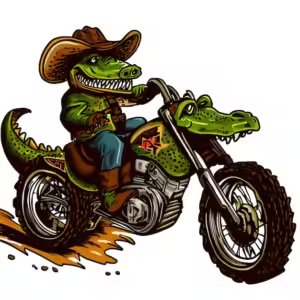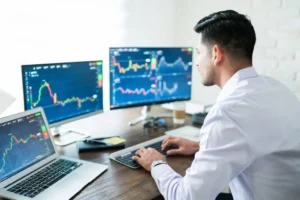Understanding the CellPrisme R Package: A Tool for Cellular Analysis
If you’re diving into cellular data analysis, you’ve probably come across the term “CellPrisme R package” and wondered what it actually does.
Well, let’s get straight to it.
The CellPrisme R package is designed to help researchers and data scientists analyze and visualize cellular-level data, making it a go-to tool for those studying complex cell systems and wanting to get a clearer picture of cellular interactions.
The keyword “CellPrisme R package” is everywhere in the research world today, but what exactly makes it special?
Let’s break it down.
What Does the CellPrisme R Package Do?
The CellPrisme R package is tailored for anyone working in fields like genomics, single-cell analysis, and cell biology.
At its core, the package simplifies working with cellular datasets, allowing users to analyze and interpret large sets of cellular information more effectively.
Here’s a quick look at what makes it unique:
- Cellular-Level Focus: Instead of handling general data, CellPrisme dives deep into cellular data, focusing specifically on the structure, behavior, and interactions within cell populations.
- Data Visualization: It includes a range of visualization tools, helping you turn raw cellular data into understandable graphics.
- User-Friendly Functions: For those who may not be coding pros, the CellPrisme R package offers accessible functions to make complex data handling a bit more manageable.
These features make it a favorite in the biological research community.

Why Use the CellPrisme R Package? Real-Life Scenarios
Imagine you’re a researcher looking at cell types in cancer studies.
You have vast amounts of single-cell RNA sequencing data, but making sense of it feels like looking at a wall of numbers.
This is where the CellPrisme R package comes in.
With a few commands, you can isolate specific cell types, study their behavior, and even see how they interact with other cell types—all visually.
A friend of mine, a cellular biologist, used it to track immune cell interactions.
She told me, “Without CellPrisme, I would have spent days just cleaning the data.”
Key Features of the CellPrisme R Package
The CellPrisme R package isn’t just a one-trick tool. It brings a whole set of features to the table that makes cellular data analysis efficient.
Data Integration
Cellular data can come from different sources, each with its own unique format.
CellPrisme integrates these datasets into a single, coherent format, saving you hours of work.
Data Filtering
Say goodbye to messy, noisy data.
The CellPrisme R package offers filtering tools that allow you to refine your dataset, keeping only the high-quality information you actually need.
Visualization Tools
Visualization is where CellPrisme shines.
With it, you can create cell maps, heatmaps, and clustering visuals that reveal patterns you might otherwise miss.
Not a data artist?
Don’t worry—the CellPrisme R package makes it simple.
Single-Cell Analysis
Single-cell data is notoriously complex.
The CellPrisme R package streamlines this by offering specific tools to examine individual cell behaviors within a larger system.
How to Get Started with the CellPrisme R Package
If you’re wondering how to actually start using the CellPrisme R package, here’s a quick guide:
- Install the Package: As with any R package, you’ll need to install it first. You can do this by running:RCopy code
install.packages("CellPrisme") - Load the Library: After installation, load it in your R environment.RCopy code
library(CellPrisme) - Input Your Data: Upload your cellular dataset. CellPrisme works best with single-cell RNA sequencing data, but it supports other formats too.
- Choose Your Analysis: Depending on what you’re looking to analyze—whether it’s cell clustering, gene expression, or another metric—you’ll find various functions within CellPrisme to help you get there.
These steps get you started, but CellPrisme’s documentation offers much deeper insights for each function.

FAQs about the CellPrisme R Package
What Kind of Data Can I Use with CellPrisme?
CellPrisme is designed for cellular data, particularly single-cell RNA sequencing datasets.
It also works well with any dataset that involves cell populations and interactions.
Is the CellPrisme R Package Hard to Use?
If you’re familiar with R, you’ll find CellPrisme fairly intuitive.
Even if you’re new, the package’s functions are user-friendly, and the official documentation provides step-by-step guidance.
Can I Visualize Data with CellPrisme?
Absolutely!
Visualization is one of CellPrisme’s main strengths.
It allows you to create easy-to-read graphics, whether you’re mapping cell clusters or studying cell-to-cell interactions.
Is CellPrisme Free?
Yes, CellPrisme is an open-source R package, which means it’s free to use for anyone.
Pros and Cons of Using the CellPrisme R Package
Let’s take a look at some advantages and limitations you might face when working with CellPrisme.
Pros
- Comprehensive Data Analysis: Covers multiple aspects of cellular analysis in one package.
- Visualization Capabilities: Generates informative visuals, a must for any research presentation.
- Community Support: Being an open-source tool, it has a community of users who contribute tips and support.
Cons
- Learning Curve for Beginners: If you’re new to R or cellular analysis, the setup may be challenging.
- Resource-Intensive: Working with large datasets in R can demand a lot of computational power.
Where to Learn More about the CellPrisme R Package
If you’re interested in diving deeper into what CellPrisme can do, there are a few places where you can learn more.
- Official Documentation: This is the best place to start. It provides a full list of functions and sample code.
- GitHub Repository: Many users share code snippets and solutions on GitHub, which can be helpful if you hit any snags.
- R Forums and Stack Overflow: These forums often have discussions around the CellPrisme R package, with experts ready to answer questions.
Wrapping Up: Why the CellPrisme R Package Matters
The CellPrisme R package simplifies the complex world of cellular data analysis.
Whether you’re mapping cell populations or identifying specific gene expressions, CellPrisme offers a toolkit to make sense of cellular data quickly and effectively.
For anyone working with cellular data, this package isn’t just a tool—it’s a game-changer.














Post Comment